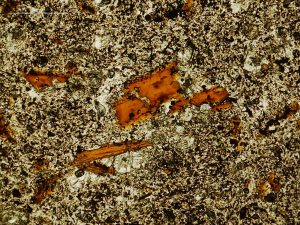
Highlights: Lamprophrye, Manor House and Killerton Chapel
Location: SS 9746 0040
What’s nearby: Coming soon!
Conservation: National Trust, Site of Specific Scientific Interest (SSSI)
Site is owned by the National Trust who maintain a trail you can follow around the estate. The quarry is inaccessible to visitors, but the lamprophyre has been used to build parts of the estate and the church, so take a good look! .
Further reading
- Cosgrove, M.E. & Elliot, M.H. 1976. Supra-batholithic volcanism of the south-west England granites. Proceedings of the Ussher Society, 3, 391-398. [PDF]
- Dupuis N, Murphy B, Braid JA, Shail RK, Nance RD (2016) Mantle evolution in the Variscides of SW England: Geochemical and isotopic constraints from mafic rocks. Tectonophysics 681:353-363. [PDF]
- Thorpe RS, Cosgrove ME, Van Calsteren PWC (1986) Rare earth element, Sr- and Nd-isotope evidence for petrogenesis of Permian basaltic and K-rich volcanic rocks from south-west England. Mineralogical Magazine 50:481-490 [PDF – £]








